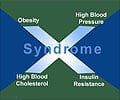Research from the University of New Hampshire found synthetic flame-retardants to cause metabolic and liver problems

Carey and her team of researchers found that laboratory rats exposed to polybrominated diphenyl ethers, or PBDEs, experienced a disruption in their metabolism that resulted in the development of metabolic obesity and enlarged livers.
"Despite the plethora of resources devoted to understanding the roles of diet and exercise in the obesity epidemic, this epidemic continues to escalate, suggesting that other environmental factors may be involved. At the biochemical level there is a growing body of experimental evidence suggesting certain environmental chemicals, or 'obesogens', could disrupt the body's metabolism and contribute to the obesity epidemic," she said.
In Carey's research, fat cells isolated from rats dosed with high levels of flame retardants daily for one month developed a sensitivity to hormones that was similar to the sensitivity experienced by people who are overweight: the fat cells became more sensitive to epinephrine and less sensitive to insulin.
"One of the hallmarks of somebody who is becoming diabetic - and often this accompanies weight gain - is that their fat cells become sluggish in their response to insulin. With epinephrine, the fat cells more easily release the fatty acids into the blood stream and if those fatty acids are not used, they promote insulin resistance," Carey said.
"Those two features - insulin resistance and epinephrine sensitivity - are two features of fat cells from people who are above normal weight. And that's what we were seeing in our rats. Even though our rats had not gained weight, they were experiencing 'metabolic obesity'," she said.
Advertisement
"Because PEPCK regulates production of the backbone of the fat molecule, if the backbone isn't made, the fatty acids that usually attach to this backbone have nothing to attach to. Their levels can rise in the liver and the blood. And it is elevated fatty acids that can lead to insulin resistance," Carey explained. Indeed, the lab's most recent findings demonstrated that the ability to create the backbone for the fat molecule was suppressed by 42 percent in liver tissue from rats treated with flame retardants compared to controls. In addition, rats exposed to flame retardants were found to have livers that were significantly larger than livers of rats that had not been exposed.
Advertisement
In a previous study, Carey and a graduate student examined the amount of flame retardant chemicals in breast milk. They found that the levels of these chemicals in breast milk are about two orders of magnitude greater than in European countries that do not allow the use of flame retardant chemicals.
Source-Medindia















